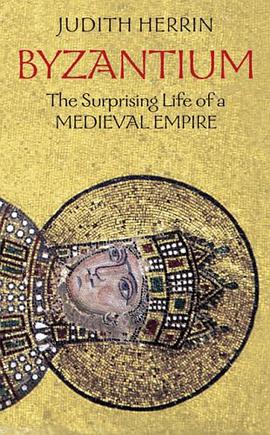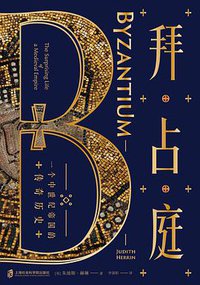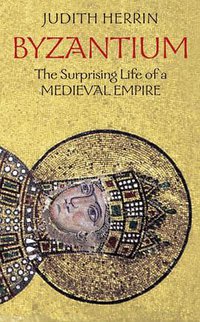Byzantium
Douban
The Surprising Life of a Medieval Empire
Judith Herrin
résumé
Byzantium. The name evokes grandeur and exoticism--gold, cunning, and complexity. In this unique book, Judith Herrin unveils the riches of a quite different civilization. Avoiding a standard chronological account of the Byzantine Empire's millennium--long history, she identifies the fundamental questions about Byzantium--what it was, and what special significance it holds for us today.
Bringing the latest scholarship to a general audience in accessible prose, Herrin focuses each short chapter around a representative theme, event, monument, or historical figure, and examines it within the full sweep of Byzantine history--from the foundation of Constantinople, the magnificent capital city built by Constantine the Great, to its capture by the Ottoman Turks.
She argues that Byzantium's crucial role as the eastern defender of Christendom against Muslim expansion during the early Middle Ages made Europe--and the modern Western world--possible. Herrin captivates us with her discussions of all facets of Byzantine culture and society. She walks us through the complex ceremonies of the imperial court. She describes the transcendent beauty and power of the church of Hagia Sophia, as well as chariot races, monastic spirituality, diplomacy, and literature. She reveals the fascinating worlds of military usurpers and ascetics, eunuchs and courtesans, and artisans who fashioned the silks, icons, ivories, and mosaics so readily associated with Byzantine art.
An innovative history written by one of our foremost scholars, Byzantium reveals this great civilization's rise to military and cultural supremacy, its spectacular destruction by the Fourth Crusade, and its revival and final conquest in 1453.
contents
List of Illustrations
List of Maps
Introduction: A Different History of Byzantium
I
Foundations of Byzantium
1 The City of Constantine
2 Constantinople, the Largest City in Christendom
3 The East Roman Empire
4 Greek Orthodoxy
5 The Church of Hagia Sophia
6 The Ravenna Mosaics
7 Roman Law
II
The Transition from Ancient to Medieval
8 The Bulwark Against Islam
9 Icons, a New Christian Art Form
10 Iconoclasm and Icon Veneration
11 A Literate and Articulate Society
12 Saints Cyril and Methodios, ‘Apostles to the Slavs’
III
Byzantium Becomes a Medieval State
13 Greek Fire
14 The Byzantine Economy
15 Eunuchs
16 The Imperial Court
17 Imperial Children, ‘Born in the Purple’
18 Mount Athos
19 Venice and the Fork
20 Basil II, ‘The Bulgar-Slayer’
21 Eleventh-Century Crisis
22 Anna Komnene
23 A Cosmopolitan Society
IV
Varieties of Byzantium
24 The Fulcrum of the Crusades
25 The Towers of Trebizond, Arta, Nicaea and Thessalonike
26 Rebels and Patrons
27 ‘Better the Turkish Turban than the Papal Tiara’
28 The Siege of 1453
Conclusion: The Greatness and Legacy of Byzantium
Further Reading
List of Emperors Named in the Text
Chronology
Maps
Acknowledgements
Index

